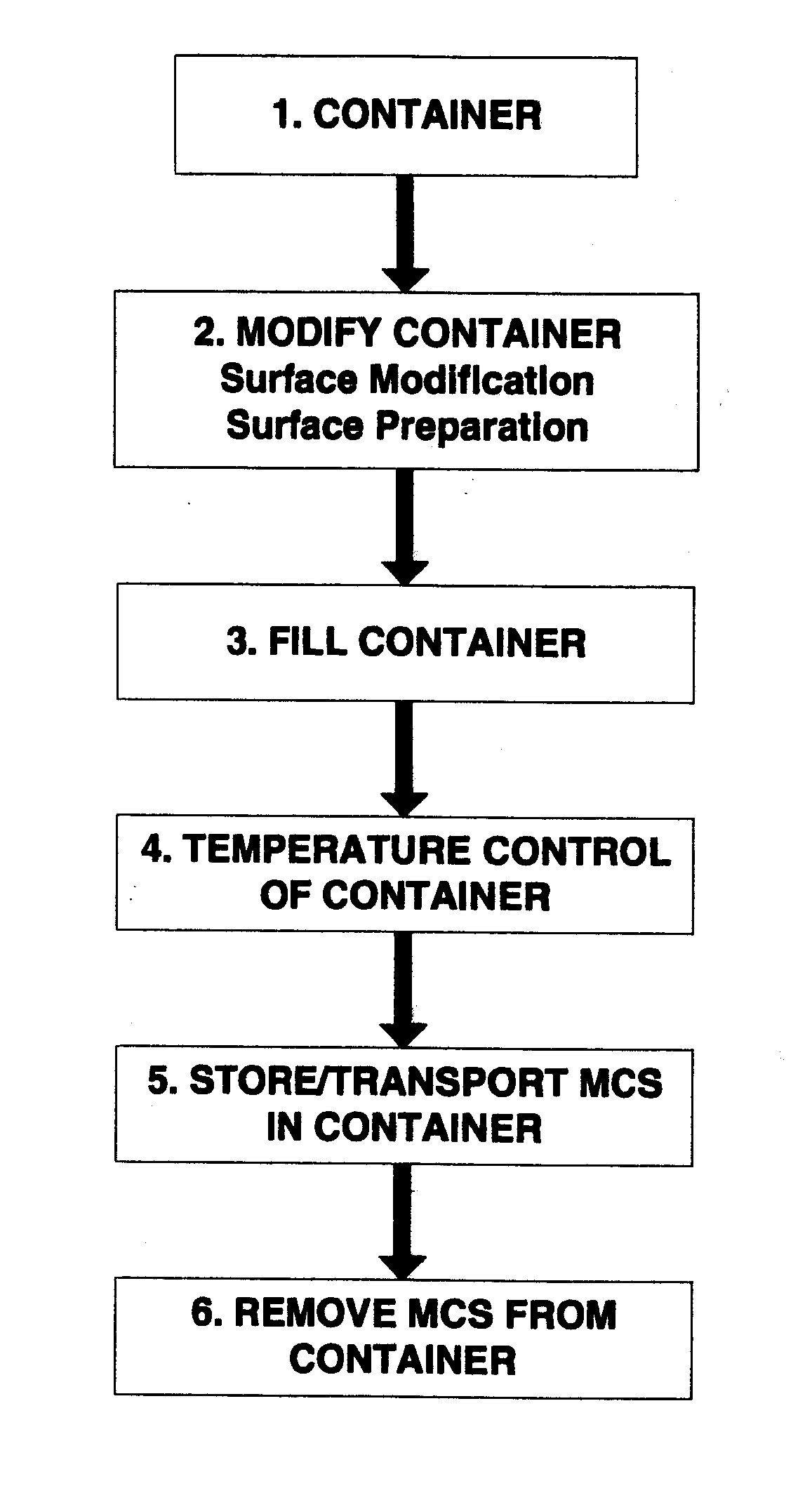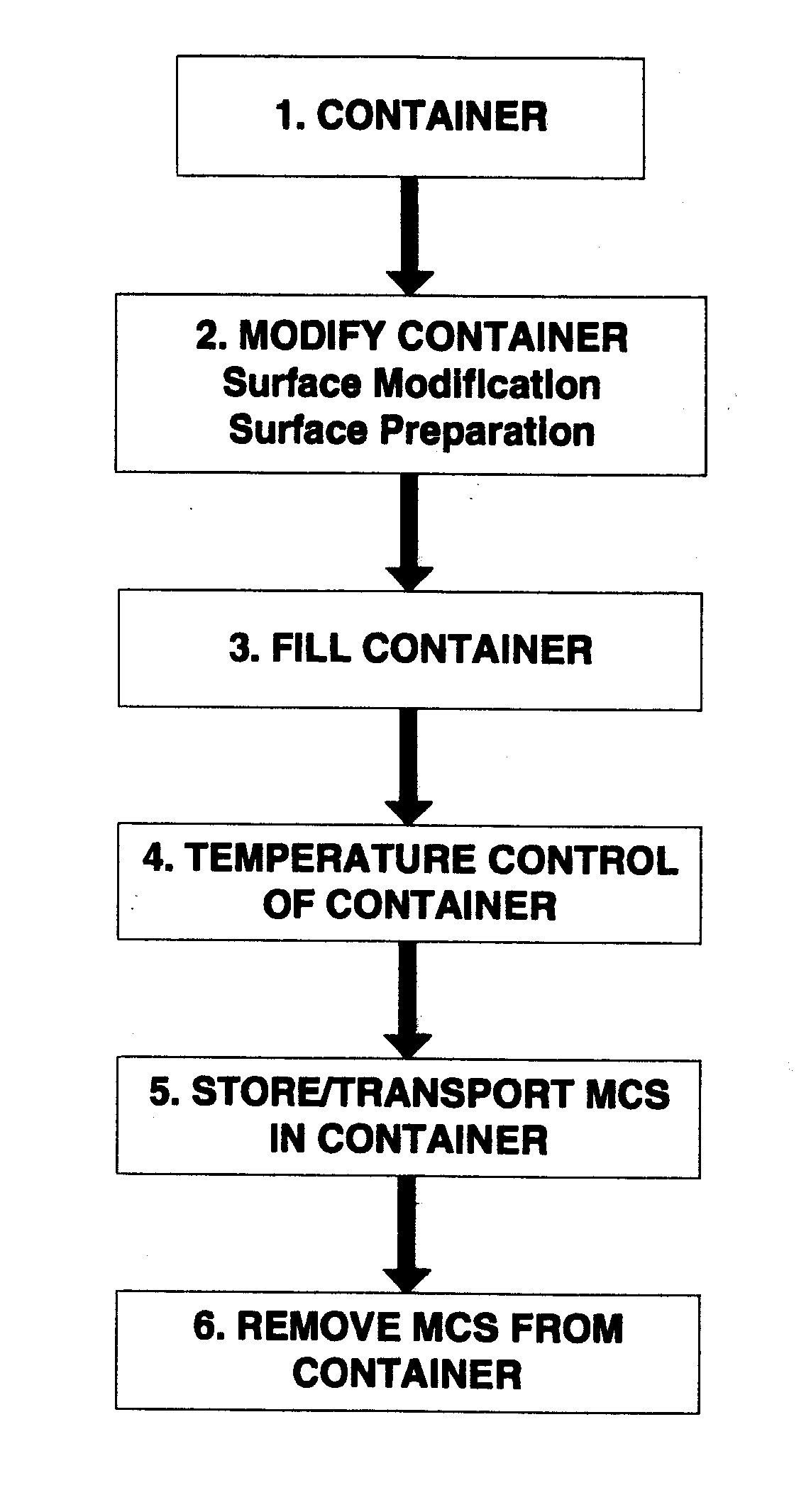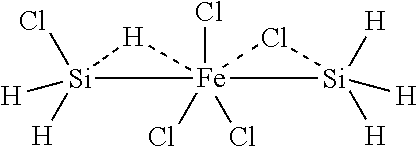Cylinder Surface Treatment For Monochlorosilane
a monochlorosilane and cylinder technology, applied in chemical vapor deposition coating, packaging, containers preventing decay, etc., can solve the problems of adversely affecting the stability of the deposition process, particularly deleterious dcs present in trace amounts,
- Summary
- Abstract
- Description
- Claims
- Application Information
AI Technical Summary
Benefits of technology
Problems solved by technology
Method used
Image
Examples
example 1
[0091]Ten carbon steel gas containers were used to store MCS at an ambient temperature of approximately 20° C. The containers had an internal volume of 44 liters. Both liquid and vapor phase MCS was stored in all the containers. The containers had no modifications to internal surface condition or surface preparation method of the types described for this invention. The period of MCS storage among the containers ranged from 6 days to 80 days. Vapor phase MCS purity was measured from each container using a gas chromatograph equipped with a thermal conductivity detector. Measurements were taken at the beginning of the storage periods and at various times during the storage process for each container. The average measured rate of loss for the MCS among all the containers due to decomposition was 7.2% per month. This MCS was converted to reaction products SiH4 and DCS. This represents the approximate baseline rate of decomposition for containers not having the benefits of this invention....
example 2
[0093]Two carbon steel containers were used to store MCS at the same ambient temperature of approximately 20° C. These containers also had an internal volume of 44 liters. Both liquid and vapor phase MCS was stored in the containers. These two containers had their internal surfaces mechanically polished using abrasive slurry, including a corrosion inhibiting agent according to the method of this invention and then had their internal surfaces silylated with CTMS according to the method of this invention prior to MCS storage. The period of MCS storage was 15 days for each container. Vapor phase MCS purity was measured from each container using a gas chromatograph equipped with a thermal conductivity detector. Measurements were taken at the beginning of the storage periods and at various times during the storage process for each container. The measured rates of loss of MCS for the two containers due to decomposition were 0% per month for both containers.
example 3
[0094]A carbon steel container was used to store MCS at the same ambient temperature of approximately 20° C. This container also had an internal volume of 44 liters. Both liquid and vapor phase MCS was stored in the container. This container had its internal surface coated with nickel using the electroless coating method of this invention, and then had its internal surface silylated according to the method of this invention prior to MCS storage. The period of MCS storage was 40 days. Vapor phase MCS purity was measured from the container using a gas chromatograph equipped with a thermal conductivity detector. Measurements were taken at the beginning of the storage period and at various times during the storage process for the container. The measured rate of loss of MCS for the container due to decomposition was 0% per month.
PUM
| Property | Measurement | Unit |
|---|---|---|
| temperature | aaaaa | aaaaa |
| vapor pressure | aaaaa | aaaaa |
| vapor pressure | aaaaa | aaaaa |
Abstract
Description
Claims
Application Information
 Login to View More
Login to View More - R&D Engineer
- R&D Manager
- IP Professional
- Industry Leading Data Capabilities
- Powerful AI technology
- Patent DNA Extraction
Browse by: Latest US Patents, China's latest patents, Technical Efficacy Thesaurus, Application Domain, Technology Topic, Popular Technical Reports.
© 2024 PatSnap. All rights reserved.Legal|Privacy policy|Modern Slavery Act Transparency Statement|Sitemap|About US| Contact US: help@patsnap.com










